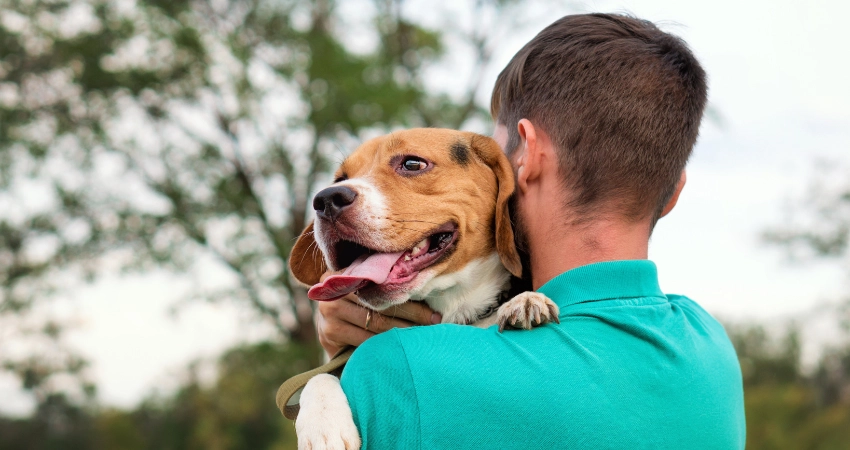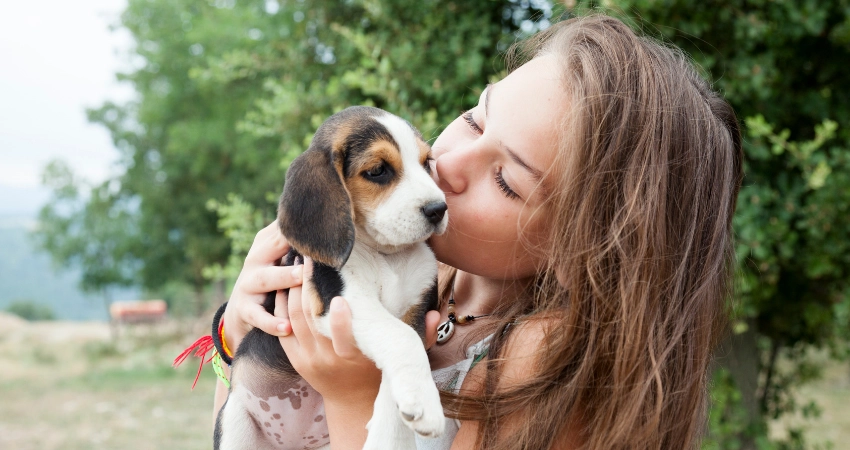Do dogs understand human emotions? This question has intrigued pet owners and experts for centuries. After all, anyone who lives with a dog knows these animals have a unique ability to react to our emotional states, whether by offering comfort or sharing joyful moments.
Scientific studies have made strides in seeking answers. Evidence suggests that dogs can interpret facial expressions, tones of voice, and even subtle changes in our behavior. But is this emotional understanding genuine or simply the result of conditioning?
If you’ve ever wondered about the emotional connection between dogs and humans, this article will delve deeper into the topic. Keep reading to understand how science explains this relationship and discover real-life examples that show the impact of human emotions on canine behavior.
The Science Behind Emotional Understanding

Research indicates that dogs have brain regions similar to humans that process emotions. For example, the amygdala, which helps us identify feelings like fear or joy, also plays a significant role in the canine brain. This raises the question: do dogs understand human emotions?
Functional MRI studies reveal that dogs react to emotional stimuli, such as happy or sad voices. Furthermore, they are incredibly sensitive to tone of voice. An upbeat tone can make them excited, while a stern tone may leave them apprehensive.
Another fascinating aspect is their sense of smell. When we’re stressed, we release hormones like cortisol, which dogs can detect. This ability makes them particularly valuable as emotional support animals, helping people with anxiety or depression.
Everyday Examples of Emotional Connection
In daily life, it’s easy to observe how dogs respond to human emotions. If you’re sad, your dog will likely approach you, lie by your side, or try to interact. These gestures make us wonder: do dogs understand human emotions consciously, or is it purely instinctual?
On the other hand, dogs also show signs of stress in tense environments. For example, during family arguments, they may bark more or retreat to a quiet corner. These behaviors suggest that they not only perceive emotions but are also affected by them.
Moments of happiness further reinforce this connection. Dogs often feed off their owners’ positive energy, showing enthusiasm during celebrations or joyful occasions. These examples demonstrate how deeply dogs are connected to human emotions.
Empathy or Conditioning?
While it seems that dogs comprehend our emotions, many experts believe their behaviors can be explained by conditioning. In other words, they associate certain emotional signals with rewards, like attention or treats. Does this mean dogs understand human emotions instinctively or through learned behavior?
Real-life cases suggest there’s more than just learning involved. Many dogs comfort their owners during sad moments by offering toys or simply staying close. These behaviors go beyond simple conditioning, indicating a possible genuine empathy.
However, the debate continues. While some researchers argue that dogs possess empathy, others claim their reactions are automatic responses to stimuli. Either way, the emotional bond between humans and dogs is undeniable.
Do Dogs Understand Human Emotions? The Role of Living Together
A dog’s environment significantly impacts its ability to understand human emotions. Dogs that live closely with their owners develop a greater ability to interpret facial expressions, tones of voice, and even gestures.
For example, dogs raised in families quickly learn to differentiate between tense and relaxed moments. A classic example is their reaction to laughter or a child’s cry. This leads us to reflect: do dogs understand human emotions better in emotionally close environments?
Moreover, dogs trained for therapies or specific tasks, such as guide dogs, demonstrate an impressive sensitivity to people’s emotional states. This reinforces how human relationships shape dogs’ perceptions of emotions.
How to Strengthen the Emotional Bond with Your Dog

Now that we better understand the question, “do dogs understand human emotions?,” it’s essential to explore ways to strengthen this bond. After all, the closer the relationship, the richer the emotional exchange between you and your pet.
Spend Quality Time Together
Spending time with your dog is crucial. Walks, playtime, and relaxing moments together are great opportunities to build trust. During these activities, pay attention to your dog’s behavior.
Does he respond differently when you’re happy or worried? These observations can reveal a lot about how dogs understand human emotions.
Use Body Language to Your Advantage
Dogs are masters at interpreting body language. Gestures, posture, and facial expressions are clear signals for them. Smiling, leaning in to interact, or offering a pet are effective ways to convey positive emotions. If you want to express calmness, avoid sudden movements and speak in a gentle tone.
Strengthen the Bond Through Training
Training is an excellent way to build an emotional connection with your dog. In addition to teaching commands, you create an effective communication channel.
During training, observe how your dog responds to your tone of voice and expressions. These interactions are clear examples of how dogs understand human emotions in practical contexts.
What Science Still Needs to Discover
While we know a lot about dogs’ ability to interpret emotions, many questions remain unanswered. For example, to what extent is this ability conscious? Can dogs distinguish between complex emotions like guilt or pride?
Researchers are developing new studies to delve into these questions. One growing area of interest is genetics, which may reveal whether the ability to understand emotions is more developed in certain breeds. Another promising area is using advanced technologies, like artificial intelligence, to decode behavioral patterns in dogs.
While we await these discoveries, what we already know is that the relationship between humans and dogs is unique. Their ability to react to our emotions is one of the reasons they hold such a special place in our lives.
The Importance of Respecting Your Dog’s Individuality

Although dogs understand human emotions on various levels, it’s essential to remember that each dog is unique. Like humans, dogs have distinct personalities, and not all display their emotions or react to ours in the same way.
For example, some breeds are naturally more outgoing and expressive, like Golden Retrievers and Labradors, while others, like Chow Chows, tend to be more reserved. This doesn’t mean a less demonstrative dog doesn’t perceive your emotions; they may simply react more subtly.
Understanding and respecting your dog’s individuality is crucial for strengthening the emotional connection. Paying attention to small signs, like changes in behavior, ear positions, or facial expressions, can help you better interpret how they’re responding to your emotions.
Do Dogs Understand Human Emotions? The Benefits of a Healthy Emotional Relationship
The emotional relationship between dogs and humans goes far beyond companionship. Studies show that living with dogs brings mental and physical health benefits. A dog that understands and reacts to your emotions can be a tremendous ally during times of stress or sadness.
People who live with dogs report fewer cases of depression and anxiety. This is because interacting with them releases oxytocin, known as the “love hormone,” which promotes feelings of well-being. Additionally, dogs encourage physical activity, like daily walks, contributing to a healthier lifestyle.
On the other hand, dogs also benefit from this relationship. When they sense their owners are happy and emotionally balanced, they tend to feel more confident and relaxed. It’s a two-way street: when you care for your dog’s emotions, they reciprocate by caring for yours.
Do Dogs Understand Human Emotions? A Bond Beyond Words
Finally, the question, do dogs understand human emotions?, may never be answered definitively. But what truly matters is the unique and genuine connection between humans and dogs.
This relationship, built on love, respect, and understanding, doesn’t depend on words. It’s based on gestures, looks, and a silent exchange of emotions that only those who live with dogs can comprehend.
Cherish this special bond. Your dog reflects the care and attention you give them, and together, you can create a life full of learning, companionship, and, of course, love.

